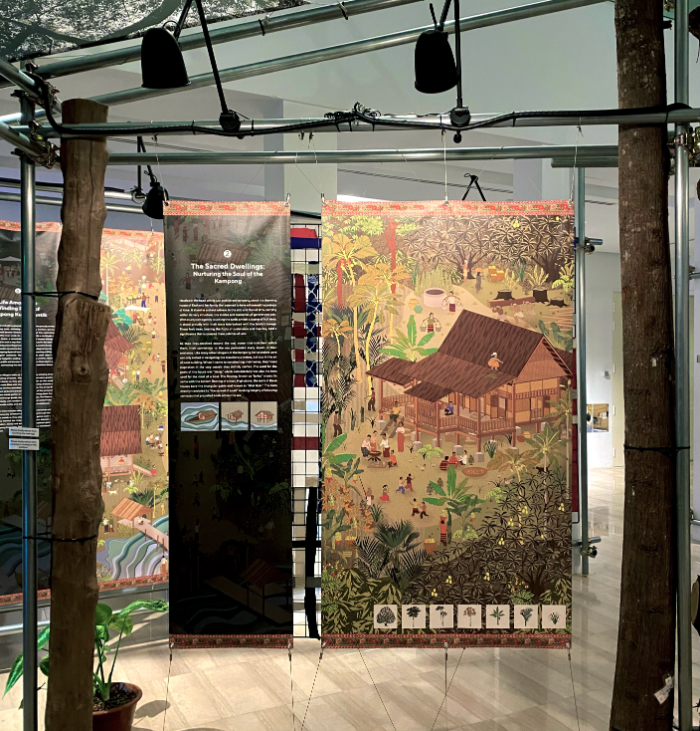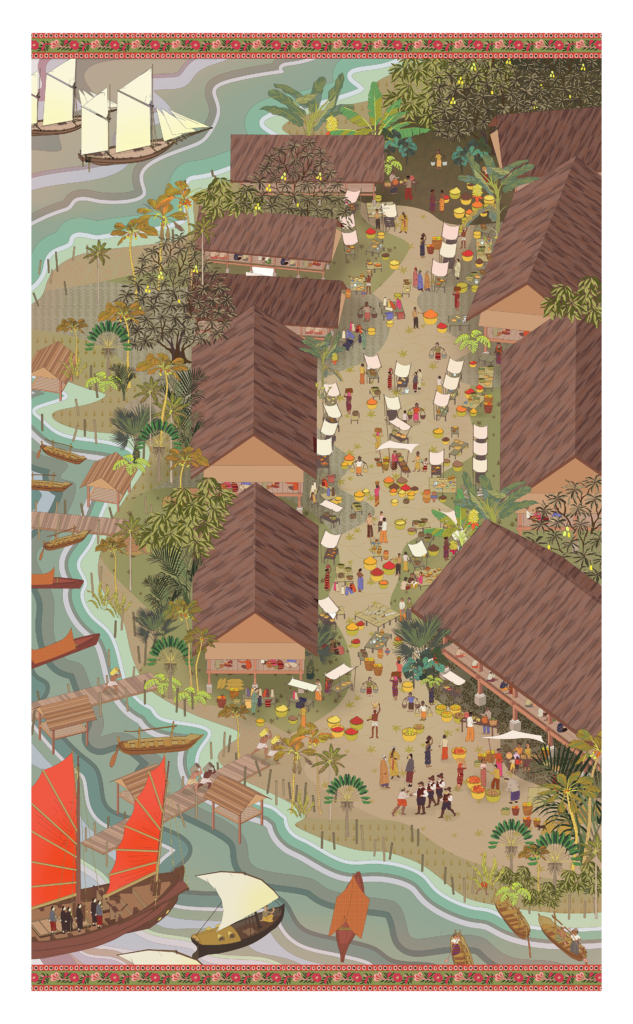A Working Archive of Design, Research and Thoughts
Kampong Port Cities

Often overlooked in global history, Southeast Asian port cities were bustling pluralistic hubs for people all across maritime Asia. ‘Kampong Port Cities of the Pre-colonial Era’ was an exhibition centred around a fictional port settlement, called Kampong Kuala Cantik. The narrative tells the story of the culturally rich Malay settlements in the 14th century, developed at the intersection of ecology, tradition and blossoming global trade. Through a series of large illustrations, the unique relationship between architecture, dwelling and society in these early Malayan settlements was celebrated.
The exhibition was held in collaboration with Oval Partnership.

A Bustling Port Settlement
Southeast Asian port settlements were the converging points for trade routes from China, India, Peru and Europe. The port markets were a dazzling display of goods, people, languages, attire and cultures. Likewise, the sea-faring vessels that collected at the port were similarly eclectic.
Amidst the Forests
The kampong is formed by a collection of timber and thatch dwellings that sit within the forest from which it is made. Appearing haphazardly laid out, the dwellings are actually arranged according to a complex logic of overlapping layers of territory, from public paths to semi-private spaces for cultivation and animal-rearing, to the innermost private spaces.


Building Rituals and Collective Construction
Though generally waterproof, the lightweight thatch and timber were sometimes no match for the monsoon weather. Collective reconstruction efforts were thus a necessary ritual to draw upon, practise and pass down the building skills and knowledge within the community. These storms were a test of the community’s social and spiritual resilience.
A Stage for Domestic Rhythms
The kampong house is a manifestation of generations of iterative cycles of building and dwelling within the embrace of the tropical forest. Domestic spaces are organised according to social rhythms – rhythms that are entwined with daily cycles of daytime heat and cool evenings.
